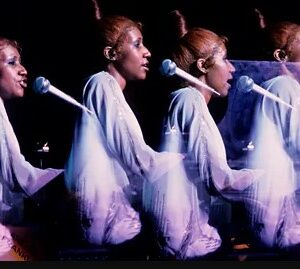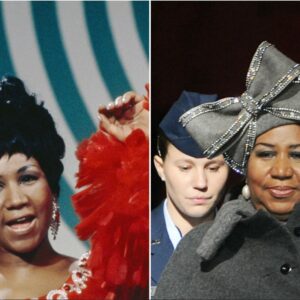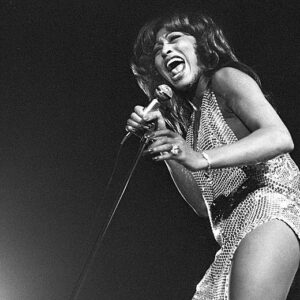Mary J. Blige is more than just a voice—she’s an anthem of resilience, a symbol of survival, and a beacon of hope for those who’ve faced seemingly insurmountable odds. Her career spans decades, blending soul and hip-hop with raw emotion, but behind the glitz and the platinum records lies a story of deep personal struggle, one that has forged her into the woman, the artist, and the icon she is today.
Early Life and Personal Struggles
Born on January 11, 1971, in the Bronx, New York, Mary J. Blige’s story begins in the Schlobohm Housing Projects of Yonkers, a tough environment that would shape much of her early outlook on life. Her mother, Cora, was a nurse, and her father, Thomas, a jazz musician, left the family when Mary was just four years old. The absence of her father left a void in her life, one filled with insecurity, anger, and a yearning for stability.
Growing up in Yonkers was no easy feat. The projects were a place where violence, drugs, and crime were an ever-present part of daily life. Blige herself has recounted the numerous times she witnessed the destructive power of addiction and violence in her community. By the time she was a teenager, she was struggling with her own demons. She turned to drugs and alcohol to numb the pain of her fractured home life and the harsh reality outside her door.
Blige’s early experiences also shaped her understanding of her worth and how society viewed women like her. The challenges of living in a predominantly black and underprivileged community instilled in her a deep sense of both pride and pain—pride in her roots but also pain from the way the world often looked down on people who grew up in environments like hers. This duality would later fuel her music, giving it the honesty and vulnerability that set her apart from other artists of her time.
Rise to Stardom
Blige’s entry into the music industry came almost by chance, though perhaps it was destiny all along. As a teenager, she recorded a cover of Anita Baker’s “Caught Up in the Rapture” in a shopping mall recording booth. Her stepfather was so impressed with the tape that he passed it along to Uptown Records, where a young A&R executive named Sean “Puffy” Combs (later P. Diddy) heard it. Immediately, he recognized something special in her voice—the pain, the grit, the soul.
At just 17 years old, Blige was signed to Uptown Records, and from there, the slow climb to stardom began. But it wasn’t an overnight success. She had to navigate an industry that often tried to box her into stereotypes. But Mary J. Blige wasn’t like any artist before her. She was raw. She was unpolished. And she was unapologetically herself.
In 1992, she released her debut album, What’s the 411?, an album that would revolutionize the music landscape. Mixing hip-hop beats with soulful melodies, Blige’s sound was entirely new, and it earned her the title “The Queen of Hip-Hop Soul.” Songs like “Real Love” and “You Remind Me” became anthems for young women across America, particularly black women, who saw themselves in Mary’s music. She wasn’t singing about a glamorous life; she was singing about real love, real pain, and real struggle.
Her follow-up album, My Life (1994), further cemented her status as a force in the industry. But this time, the music was darker, more introspective. Blige was grappling with her own battles—addiction, depression, and toxic relationships—and those battles were reflected in her haunting lyrics and soulful melodies.
Battles with Addiction and Mental Health
Behind the scenes, Blige was fighting battles that the public could only imagine. Her rise to fame had coincided with an increased reliance on drugs and alcohol. What had started as a way to escape the pain of her childhood and tumultuous personal life soon spiraled into a full-blown addiction.
In interviews, Blige has been candid about the depth of her struggles with substances. “I was trying to drink the pain away,” she once admitted. At the height of her fame, she was also at the height of her despair. Depression took hold, and the pressures of being in the spotlight only made things worse. Blige’s lyrics during this period reflected her inner turmoil, with songs like “Be Happy” offering a glimpse into her battle to find peace and happiness amidst the chaos.
The music industry can be an unforgiving place, and Blige’s personal struggles were exacerbated by the demands of fame. But instead of hiding, she used her music as a platform to confront her demons head-on. Fans connected with her on a deeply personal level—her struggles with addiction and mental health made her even more relatable, more human. She was no longer just a star; she was a survivor, fighting for her own life in front of the world.
The road to recovery wasn’t easy. Blige has described it as a long, painful process that required her to confront the traumas of her past and take responsibility for her healing. But it was a road she walked with courage. By the early 2000s, Blige had begun to turn the corner, finding sobriety and a new sense of purpose.
Overcoming Abuse and Toxic Relationships
As if addiction and mental health challenges weren’t enough, Blige also endured abusive and toxic relationships that further compounded her pain. One of the most publicized was her tumultuous relationship with K-Ci Hailey of Jodeci. The relationship was filled with emotional abuse, and Blige has since spoken about how it affected her self-esteem and sense of worth.
“I didn’t think I deserved better,” Blige once said in an interview, reflecting on the cycle of toxic relationships she found herself in. Her music during this period became a way for her to process the pain of love gone wrong. Songs like “Not Gon’ Cry” and “I’m Goin’ Down” became anthems for women going through similar experiences, offering solace and solidarity.
It wasn’t until she found the strength to break free from these toxic patterns that Blige began to truly heal. Her 2001 album, No More Drama, was a declaration of independence, a powerful statement that she was no longer going to let her past dictate her future. The album’s title track became a personal mantra for Blige, and it resonated with fans who had followed her journey from pain to empowerment.
Triumphant Comeback and Legacy
Mary J. Blige’s story is one of triumph. After years of battling addiction, abuse, and depression, she emerged stronger, more focused, and more determined than ever. She’s not just a singer; she’s an actress, a producer, and an inspiration to millions.
Her comeback wasn’t just personal—it was professional too. Blige has won multiple Grammy Awards, and her albums continue to sell millions of copies worldwide. In 2017, she added “Oscar-nominated actress” to her list of accolades with her role in the critically acclaimed film Mudbound. Her performance earned her nominations for both Best Supporting Actress and Best Original Song, further solidifying her place as a multifaceted artist.
Blige’s legacy goes beyond her music and acting. She has become a symbol of strength for women everywhere, particularly black women, who see in her someone who has overcome immense obstacles and emerged victorious. Blige’s openness about her struggles with addiction, mental health, and abuse has helped to destigmatize these issues, making it easier for others to come forward and seek help.
Conclusion: The Power of Mary J. Blige’s Voice
Mary J. Blige’s voice isn’t just powerful because of its range or tone—it’s powerful because of what it represents. It’s the voice of a woman who has survived, who has fought back against the odds, and who continues to inspire others to do the same.
Through her music, her acting, and her public persona, Blige has created a legacy that goes beyond entertainment. She has become a role model, not because she’s perfect, but because she’s real. Her story reminds us that no matter how dark things get, there is always the possibility of redemption, recovery, and triumph.
In the end, Mary J. Blige’s life and career are a testament to the power of resilience. She has turned her pain into power, her struggles into strength, and her story into a source of hope for countless people around the world. And for that, Mary J. Blige will forever be more than just the Queen of Hip-Hop Soul—she will be an icon of survival and success.





